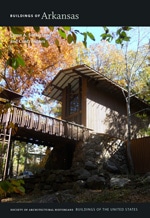No other church in the region presents such an eye-catching version of Beaux-Arts classicism. The building’s white stucco surfaces, with scarcely an inch left unornamented, gleam in the sunlight, recalling images of the dazzling classical architecture of the “White City” of the Chicago World Columbian Exposition of 1893. The blocky, additive quality of the building is typical of this Texas-based firm that designed many Baptist churches in the South. Projecting from both the 6th and Beech streets sides of the church are entrances set within porticos supported by colossal Ionic columns. The longer 6th Street facade has a row of tall arched stained glass windows separated by Ionic half-columns. A cornice with prominent modillion blocks provides continuity along with a roof balustrade. Anchoring the composition is a tall dome, boasting pressed metal colonnettes, garlands, fish-scale shingles, and two rims, the upper one scalloped. To improve acoustics in the sanctuary, the dome was closed off from within in 1951, and its stained glass windows were installed in the foyer of the adjoining educational building. In 2003 the dilapidated dome was replaced by a fiberglass mold, an exact replica of the original.
The church’s interior has been modernized over the years to facilitate televised church services. Through a series of major additions, the church now occupies the entire original block. The first major addition in 1929 was the attached educational building on the south, a harmonious classical block with columns in antis. Architecturally unrelated to each other or the original sanctuary are a 1967 Sunday school and preschool building on the south and a large family activities building constructed in 1988. As was the case with several other early congregations on the Arkansas side of town, this one, organized in 1889, first occupied the Olive Street Baptist Church at 8th and Olive streets on the Texas side of Texarkana. The frame Gothic Revival building was moved to the new Arkansas location here at 6th and Beech in 1904 and destroyed by fire a year later. The blocks of Beech Street from 14th to 24th streets retain their brick paving of 1904 to form the largest contiguous section of a brick street remaining in the city, and one that is remarkably smooth despite one hundred years of use.















